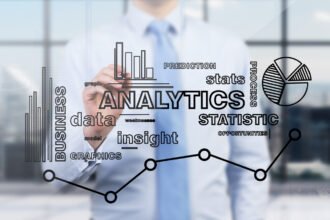Today’s work environments have been deeply digitized, in the sense that even the most industrial settings, like manufacturing plants and construction sites, are run at least in part by sensors, analytics, and robots. A computer tells you when you need to change the oil in a machine and predictive data chooses the best treatment for a patient. In many ways, human instinct has been eliminated in favor of big data.
With this in mind, it would be logical to ask – as many have – whether humans are even necessary in a world run by data, but maybe that’s the wrong question. Perhaps, to run a better business, no matter the setting, we need to ask: what is the best way to combine years of human experience with analytics to do better than the predictions?
Our Data Addiction
From the perspective of management, it’s in our best interests to be risk averse. While risk may be how we create disruptive innovations, it can also send your business crashing to the ground. Ultimately, though, our fear of risk is behind our addiction to data. We believe if we stick closely to the numbers – especially if they come from an enterprise risk management (ERM) system – nothing can go wrong.
The Human Factor
Of course, when we assume that the data will never lead us astray, we’re also choosing to overlook something that a computer can never replicate: instinct. When someone has been operating a particular machine or performing a procedure for years, they begin to understand that process in a deep way and can respond based on details that they may not be able to articulate. Maybe it’s a sound the engine makes, a slight lag in a computer, or the particular presentation of a tumor. Operators are our first responders.
When we embrace human instinct as part of the process alongside analytic data, we can move from overall positive outcomes based on machine knowledge to integrated understanding. If we’re going to take this path, however, we need to train and trust the people on the ground.
Integration: The Heart Of The Matter
What does it look like to use data without relying on it exclusively? Put simply, it requires balance.
Consider, for example, a construction site. Outside the planning stages and safety practices, we don’t think of construction as a world especially centered on data. With today’s machines, however, it’s standard practice to download machine data, such as fluid analysis or mileage. But that’s not enough. You can’t just change the oil when the data says so; you should also change it when the operator notices that the gears are sticking in a way they shouldn’t. Supervisors need to accept that insight as overruling the data.
Looking Forward
This same model can be applied in any setting – we need to be willing to stray from the data – and this will be a greater challenge as we push automation forward. How do you discern a potentially dangerous variation when your workforce is full of robots? Robots don’t have intuition, and while machine learning is increasingly a part of automated systems, what a computer learns becomes another form of data. It doesn’t become instinct.
One solution, though not a replacement for human understanding, is to use improved digital interfaces for our data systems. If our data applications are intuitive in terms of use, then we stand the greatest chance of seeing through the data and discovering new ways to spot problems in the larger system.
When operators are no longer touching the machines, they need to get in touch with the data, a process that is still many years in the making but that we must look towards in the development process.







